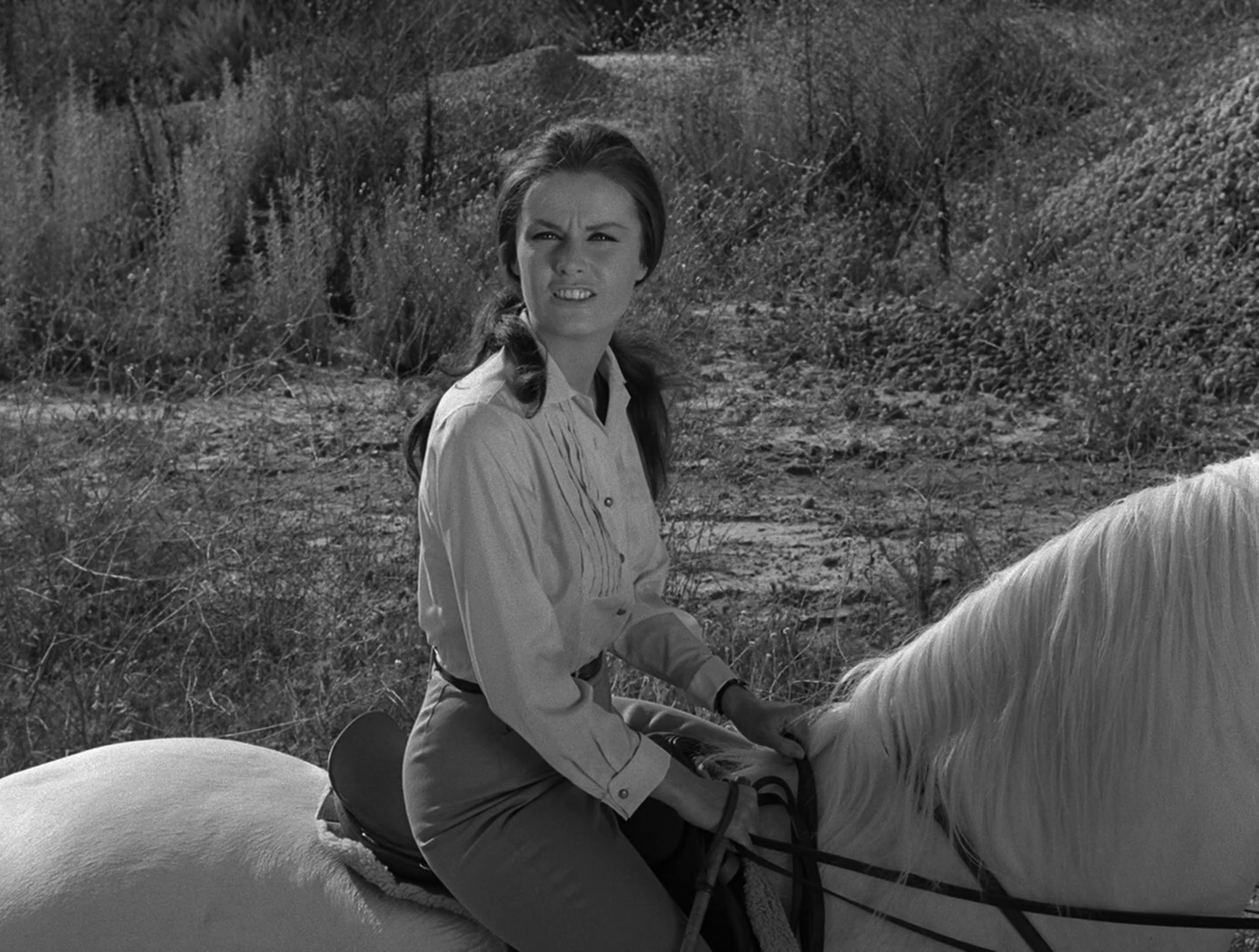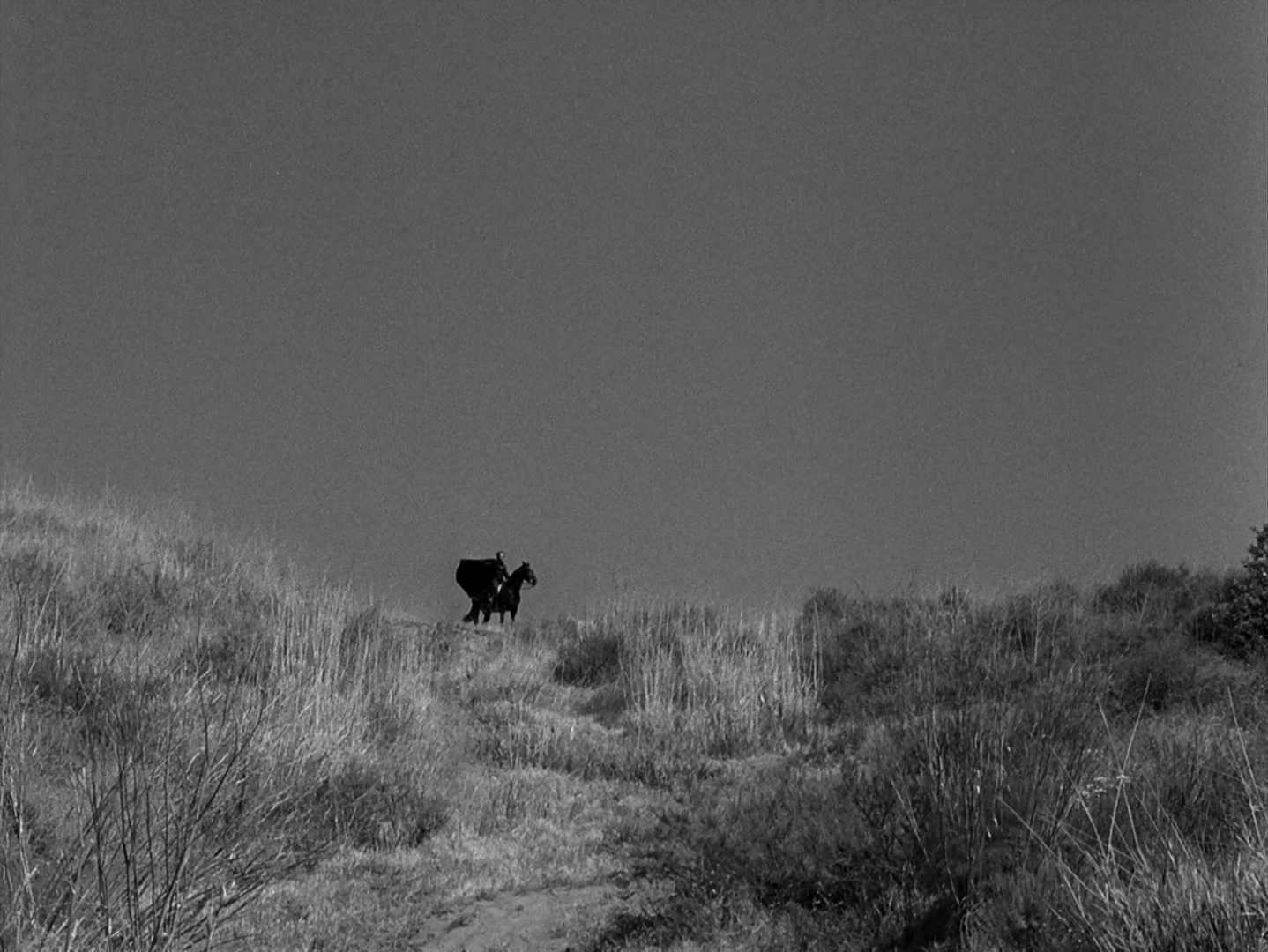Season 5, Episode 22 (142 overall)
Originally aired 2/28/1964
Cayuga Production # (N/A)
Fifty years ago tonight, as it stumbled awkwardly toward its disappointing end, The Twilight Zone pitched a 7th-inning curve ball and brought a healthy dose of art house cinema to the masses. No, they didn't rerun “Five Characters in Search of an Exit.”
In 1962, Robert Enrico's La Rivière du Hibou (The Owl River), a French adaptation of Ambrose Bierce’s classic short story “An Occurrence at Owl Creek Bridge,” won first prize for Best Short Subject at the Cannes Film Festival. A year or so later, The Twilight Zone was finishing up its fifth season, over budget and one episode short of its network order. Producing that 36th episode would put the show even further into the red.
Sounds like the ingredients for a fascinating collision, no?
Cayuga Productions purchased the US television rights to the film for a paltry $20,000.00, and aired it as a special episode of The Twilight Zone fifty years ago tonight. The film subsequently won an Oscar for Best Live Action Short Film for 1963, mere weeks after it aired. The agreement only covered one broadcast and one repeat (which occurred on 9/11/64), which prevented its inclusion in the syndication package, making “An Occurrence at Owl Creek Bridge” one of the legendary “Lost Five” episodes.
While you won't find "An Occurrence at Owl Creek Bridge" on TV, it’s easily tracked down on DVD, Blu-ray, Netflix and Hulu (as of this writing). It can also be found in its original, unedited (and un-TZified) form on a region 2 DVD (which also includes two other short films directed by Robert Enrico from Ambrose Bierce stories). I have a multi-region player, so yes, I own the DVD.
So what’s the difference between the two versions? Mostly cosmetic stuff: a couple of minutes were shaved off to meet the strict 25-minute length requirement of American television, but honestly, nothing important was lost (the film meanders some, so tightening it up actually improves it). And since it wasn’t made for TV, there’s no commercial break in the original. And of course there’s no Twilight Zone opening titles or end credits, and no Rod Serling narration. Oh, and the original doesn't have any tubes of Crest hovering around in the end credits (damn you, product placement!). Otherwise… they’re essentially the same. It’s not like a Blade Runner situation with dramatically different cuts that alter the story. Short and sweet: you aren’t missing anything if you never see the original. And frankly, the improved picture you get with the TZ version on Blu-ray is pretty substantial.
I first saw the film in middle school, projected in 8mm, shortly after discovering The Twilight Zone. I’d already bought Zicree’s book and practically memorized it, so I was aware that there were five episodes that I might never get to see. Therefore, when my English teacher started that projector, I was extra attentive.
Fast forward to high school: I was hanging out at the mall one day (which is pretty much what you did if you were a teen in the late-80’s), and I was rooting through a bin of clearance VHS tapes at Sam Goody. I saw the face of my idol, Rod Serling, staring out at me from that bin. I snatched the tape up.
I’d never heard of Kids Klassics before, but they were aces in my book, for they’d released the Twilight Zone version of “An Occurrence at Owl Creek Bridge,” something I thought I'd never see, and it was about to be mine. I hurried to the checkout line, in case the hallucination might wear off. I enjoyed the hell out of that tape (it contained Serling’s “next week” promo for “Queen of the Nile”; I never knew that those even existed, since I’d only seen the series in hacked-up form in syndication). Three or four years later, the episode appeared on VHS in a legitimate form: it was part of the two-tape Treasures of The Twilight Zone (which also featured another previously-unattainable Lost Five episode, “The Encounter”). Later still, the episode showed up in two different DVD incarnations and, more recently, Blu-ray.
THE MUSIC
There’s not much underscore to be found in “An Occurrence at Owl Creek Bridge,” outside of the some free jazz-style drumming that underlines the protagonist's frantic flight back toward home. The real musical heart of the film lies in the song “Live Livin' Man,” which we first hear when the protagonist first resurfaces after plummeting from the bridge (fragments of the song appear here and there throughout the rest of the film). Here’s my attempt to reconstruct the pieces into one song:
FAMILIAR FACES
 |
| Robert Jacquet as Payton Fahrquar. |
None. It’s a French film, kids. Nobody in it showed up on other Twilight Zones. I dunno, though, fans of classic French cinema might see somebody they recognize. I tend toward Kurosawa and Bergman myself, but I do love me some Jean Cocteau (particularly Orpheus).
In or around 1993 I made a short film called “Welcome to Nowhere," a modern variation on the Bierce story. It centered on a disabled vet who, under some extraordinary circumstance, regains the use of his legs in a moment of crisis… or does he? I wrote, directed and starred in it, my (then) wife Lisa did most of the shooting, and my uncle Greg had a cameo as an evil clown (is there any other kind?). I actually contacted CBS to get permission to use various TZ music cues, but was denied (more to the point, I couldn't afford what they were asking). I ended up using a couple anyway (from Jerry Goldsmith’s “Back There” and “The Invaders”). I entered the finished film in an annual amateur filmmakers contest put on by Sony. I didn’t win.
Well kids, I tried. I dug through box after box after box in my storage until, and could not for the life of me find the goddamned tape. I couldn't even find my raw 8mm footage, which would have at least provided some screen caps. I found literally every other video project I've ever worked on, but "Welcome to Nowhere" eluded me. If I'm able to track it down between now and the end of this blog, I'll certainly post it.
It’s hard to judge “An Occurrence at Owl Creek Bridge” against the rest of the series, since it’s not technically a Twilight Zone episode. Taken on its own terms, it’s an excellent rendering of a classic tale, an all-around gorgeous package. Actual TZ or not, it’s a definite high point of the show’s fifth and final season.
Next week:
Lee Phillips falls victim to a pyramid scheme. MeSphinx he’ll get his asp kicked.




























+2.JPG)

.jpg)

.png)

.png)














.jpg)




